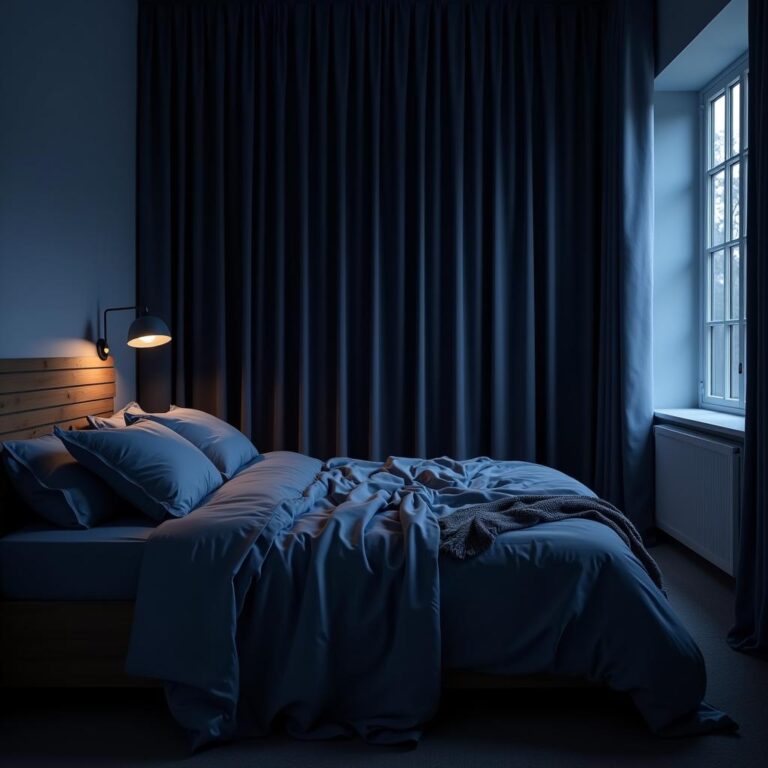Getting a good night’s sleep is essential for overall health and well-being, and one of the often-overlooked factors that contribute to quality sleep is the temperature of your bedroom. Finding the best room temperature for quality sleep can significantly impact how quickly you fall asleep, how well you sleep through the night, and how refreshed you feel in the morning. In this article, we will explore the science behind temperature and sleep, recommend the ideal temperature ranges, and offer tips to achieve the optimal sleeping environment.
Understanding the Connection Between Temperature and Sleep
The human body has a natural circadian rhythm, which is influenced by various factors, including the environment. Temperature plays a crucial role in regulating this rhythm, as it affects our sleep cycles and hormone production. When you sleep, your body temperature naturally decreases, and a cooler environment can facilitate this process.
Ideal Temperature Range for Sleep
According to sleep experts, the ideal room temperature for quality sleep generally falls between 60°F to 67°F (15°C to 19°C). This range can help significantly improve sleep quality for most people. However, individual preferences can vary; some may find comfort at slightly higher or lower temperatures.
Factors that Affect Personal Comfort Levels
While the recommended temperature range is a good starting point, personal factors can influence individual comfort:
- Body Composition: Individuals with higher body fat percentage may retain heat more effectively, making them feel warmer at conventional temperatures.
- Sleepwear: The materials and thickness of your sleepwear can affect how warm or cool you feel overnight.
- Bedding: Similarly, the materials in your sheets and blankets can trap heat or provide breathability.
- Humidity Levels: High humidity can make the air feel warmer than it actually is, impacting sleep comfort.
Why a Cooler Room Promotes Better Sleep
Sleeping in a cooler environment has physiological benefits that enhance sleep quality:
- Faster Sleep Onset: Cooler temperatures can help you fall asleep faster because they promote a decrease in core body temperature.
- Deeper Sleep Cycles: A cooler room helps you reach deeper stages of sleep, where restorative processes occur, leading to better overall rest.
- Reduced Sleep Disturbances: A comfortable sleep environment minimizes tossing and turning, leading to less disruption during the night.
Tips to Achieve the Best Room Temperature for Quality Sleep
Here are some practical tips to help you create an optimal bedroom environment conducive to quality sleep:
1. Invest in a Programmable Thermostat
A programmable thermostat allows you to set your bedroom temperature before bedtime and can adjust throughout the night for maximum comfort. This technology can help maintain a consistent temperature that supports quality sleep.
2. Use Fans or Air Conditioning
Fans can help circulate air in your room, making it feel cooler without significantly decreasing the actual room temperature. Air conditioning is also effective in maintaining the ideal sleeping temperature, particularly during warmer months.
3. Choose Breathable Bedding
Select lightweight, breathable fabrics for your sheets and blankets, such as cotton or bamboo. These materials encourage airflow and help wick moisture away from the body, keeping you cool and comfortable throughout the night.
4. Adjust Your Sleepwear
Choosing the right sleepwear can also affect comfort. Opt for loose-fitting, lightweight pajamas made from breathable materials to prevent overheating during the night.
5. Monitor Humidity Levels
Using a dehumidifier can lower humidity levels in your room, making it feel cooler and more comfortable. Aim for indoor humidity levels between 30% and 50% for optimal sleeping conditions.
6. Limit Electronics Before Sleep
Electronic devices can emit heat and blue light, which can disrupt your circadian rhythm. Aim to turn off devices at least an hour before bed and keep them out of the bedroom if possible.
7. Keep Windows Covered
Using blackout curtains or shades can help regulate the temperature of your room by blocking out the sun during the hot parts of the day, thus keeping the space cooler.
Test and Adjust
Since everyone’s comfort levels are different, take the time to experiment with your room temperature. Start by setting your thermostat to the lower end of the recommended temperature range and adjust as needed. Keep a sleep journal to track how changes in room temperature impact your sleep quality, and make note of the conditions under which you sleep best.
Conclusion
Finding the best room temperature for quality sleep is an individual journey that can significantly affect your overall well-being. By maintaining a cool, comfortable sleeping environment, utilizing breathable bedding, and being mindful of humidity and air circulation, you can enhance your sleep quality and wake up feeling rejuvenated. Remember, the key is to listen to your body and make adjustments as needed. Prioritizing a suitable sleep environment will pay dividends in your health, mood, and productivity. Sweet dreams!







